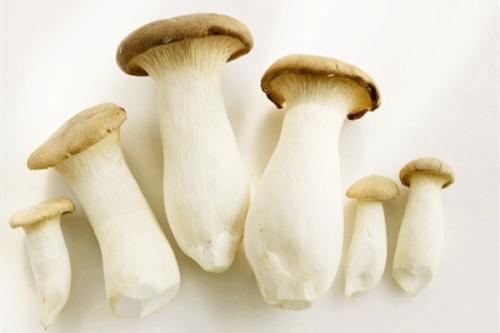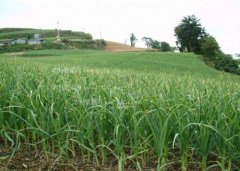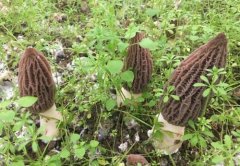Cultivation of Pleurotus eryngii: what are the answers to common questions in the cultivation of Pleurotus eryngii
Pleurotus eryngii is a common edible fungus, and many problems are often encountered in the cultivation of Pleurotus eryngii. Here are some common questions for you. I hope it will be helpful to you.

1. How to deal with the problem of many fruiting bodies but low commodity rate of Pleurotus eryngii?
If the mushroom buds were not carried out, after the layer differentiation, a different number of small mushroom buds grew on both sides of the bag. Due to the limitation of nutrition and space, most of these buds can not grow into commercial mushrooms, so they must be thinned in time. The principle of thinning buds: when the mushroom buds were just formed, there were 4 or 6 mushroom buds with good position, normal mushroom shape and similar size on each side, and when the fruiting body grew to about 2cm, another optimization was carried out, and 2 ~ 4 buds were left on each side. In this way, a higher commodity rate can be guaranteed.
two。 What are the reasons for the prolongation of Pleurotus eryngii?
The viability of ① strain is weak. The ② bag is too tight or the water content is more than 65%. Due to the lack of sufficient oxygen in the bag, the growth rate of the mycelium is inhibited. The temperature of the ③ germicidal environment is less than 20 ℃, and the ventilation is poor, or the pH of the culture material is not suitable, which will also cause the bacteria to develop slowly.
3. What is the reason for incomplete sterilization of Pleurotus eryngii?
When ① is mixed, the culture material does not absorb water, and there is a raw heart in the material, especially the hard culture materials such as sawdust and corncob. In the process of sterilization, ② did not exhaust cold air and did not have a good thermal cycle. The phenomenon of incomplete sterilization will occur when the sterilization time of ③ is insufficient, the cease-fire gas is cut off in the sterilization process, and the bacteria bags in the sterilization pot (pot) are placed too much and too tight.
4. How to manage the budding stage of bag planting Pleurotus eryngii?
After the bacterial bag is full and maintained for about 7 days, the hyphae are moved into the mushroom shed after the mycelium is fully matured, cut off the lid or remove the cotton plug, remove the ring, turn the bag mouth down or cut off the material surface. The humidity in the shed was adjusted to about 95%, the light intensity was 1000 lux, and there was a small amount of ventilation. After about 15 days, the white spot primordium was formed on the surface of the bag. When planting in autumn, measures should be taken to reduce the greenhouse temperature properly, and in spring planting, efforts should be made to increase the greenhouse temperature, increase the ventilation rate, maintain the humidity in the greenhouse, and increase the number of primordia, with the differentiation of primordia and the appearance of young buds. At this stage, the greenhouse temperature should be strictly controlled below 20 ℃, otherwise, buds can not appear.
5. How to manage Pleurotus eryngii after bag planting?
Clean the mushroom surface and clean the mushroom shed, spray pyrethroid insecticides and carbendazim and other fungicides in spring, close and shade, so that the fungus bag can recuperate, and only spray fungicide once in autumn planting. After the primordium is reproduced, the mushroom can be managed again. Generally, it can collect 1-3 tide mushrooms, the biological efficiency is 50%-60%, and the commodity rate is 80%-90%.
6. What are the temperature requirements for the growth of Pleurotus eryngii?
The temperature range of mycelium growth of Pleurotus eryngii is 22 ~ 27 ℃, and the optimum temperature is about 25 ℃. When the temperature is higher than 30 ℃, the mycelium growth is poor. Pleurotus eryngii is a kind of constant temperature fruiting mushroom, the temperature difference is too large, which is disadvantageous to the occurrence of primordia. The temperature of mushroom emergence is 10: 18 ℃, the optimum temperature is 12: 16 ℃, the primordium will not appear below 8 ℃, and deformed mushrooms are easy to occur when the temperature is higher than 20 ℃, and diseases will occur, causing dead and rotten mushrooms. The growth temperature of fruiting body is 10: 21 ℃, and the optimum temperature is 10: 18 ℃. The mastery of temperature varies from strain to strain, so special attention should be paid to the characteristics of the strain during introduction.
Are there any of these six questions that you want to ask? Does it help you? In fact, Pleurotus eryngii is very easy to grow, only you can be more careful.
- Prev

Garlic sprouts cultivation techniques: how to plant garlic sprouts? What are the main points of garlic seedling cultivation technology
Do you like garlic sprouts? Most people don't like it, only a small number of people like it, but garlic sprouts are still bought by many people, because it is a side dish that can add flavor, and we will put garlic sprouts in many dishes to add flavor. And that's what makes the more
- Next

Cultivation techniques of Morchella: planting methods and conditions of Morchella
What are the benefits of Morchella? Why so many people grow Morchella. How to grow Morchella? Do you want to know? Let's get to know it. According to the determination of Morchella, every 100 grams of Morchella contains 28.1 grams of crude protein, 4.4 grams of crude fat and many amino acids.
Related
- Fuxing push coffee new agricultural production and marketing class: lack of small-scale processing plants
- Jujube rice field leisure farm deep ploughing Yilan for five years to create a space for organic food and play
- Nongyu Farm-A trial of organic papaya for brave women with advanced technology
- Four points for attention in the prevention and control of diseases and insect pests of edible fungi
- How to add nutrient solution to Edible Fungi
- Is there any good way to control edible fungus mites?
- Open Inoculation Technology of Edible Fungi
- Is there any clever way to use fertilizer for edible fungus in winter?
- What agents are used to kill the pathogens of edible fungi in the mushroom shed?
- Rapid drying of Edible Fungi

